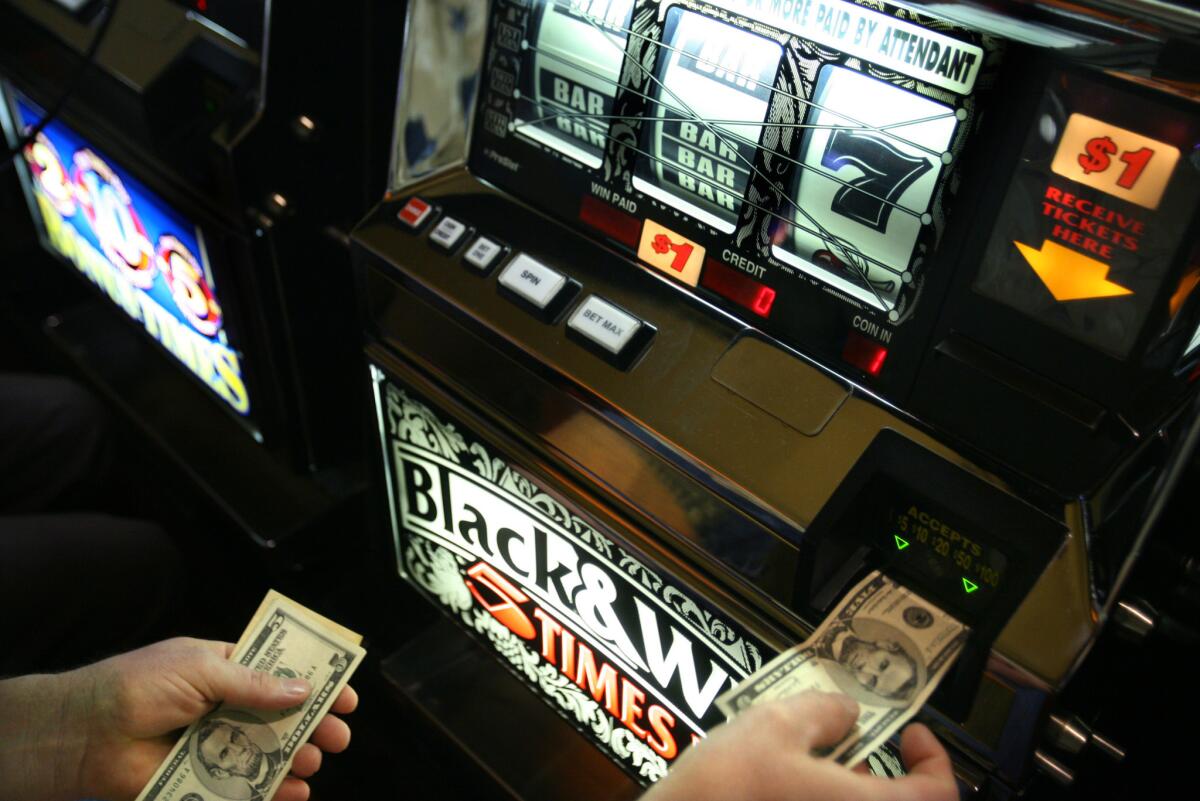Jackpot! Casinos linked to reduced risk of childhood obesity

Apparently casinos are good for losing more than just cash.
A study published Tuesday in the Journal of the American Medical Assn. found that adding slot machines to California casinos was linked to a modest reduction in obesity rates for Native American children.
Specifically, researchers found that for every one-armed bandit added per child, there was a corresponding 0.19% reduction in obesity risk.
Study authors based their conclusions on an examination of 117 California school districts that encompass tribal lands.
In California, casinos are permitted only on Native American lands, and profit must be reinvested in the welfare of the tribe. Researchers calculated that for every casino slot machine added per capita, there was a corresponding increase in annual per capita income of $541.
To determine whether the casino income had an impact on child obesity, researchers collected gym class fitness records for 22,863 tribal children ages 7 to 18 between 2001 to 2012. They then compared the data for communities before the casino construction or expansion, and after.
During the study period, researchers found that the average number of per-child slot machines doubled from four to eight.
âOpening or expanding a casino was associated with increased economic resources and decreased risk of childhood overweight/obesity,â wrote lead author Jessica Jones-Smith, an assistant professor at the Johns Hopkins Bloomberg School of Public Health in Baltimore, and her colleagues.
They wrote that the overall prevalence of obesity among the studied children was 48%. On average, communities that added slot machines reduced that rate by about 5%.
Researchers used slot machines as a unit of reference because it was an indication of a casinoâs size, they wrote. Tribes must also pay money to the state based on the number of slot machines a casino operates.
Of the 117 districts studied, 57 either opened or expanded a casino, 24 had preexisting casinos that were not altered, and 36 did not have a casino at any time.
Jones-Smith and her colleagues wrote that further research must be done to determine the connection between casinos and reduced risk of obesity. However, they hypothesized that increased income resulted in greater health-promoting resources, such as recreation and community centers, health clinics and improved housing.
In an accompanying editorial, Dr. Neal Halfon, a professor of pediatrics at UCLA, cautioned against making sweeping conclusions regarding child welfare and gambling.
âA casino in every neighborhood is not the answer, but increasing family income and removing other pressures that reduce the capacity of families to invest in their children should be part of the solution,â Halfon wrote.
The JAMA study is one of a handful that have examined links between casinos and local communities. Those previous studies, which used national data, have reported very different effects.
Although some have found improvements in psychiatric illnesses and a decrease in overall mortality, others have reported increases in accidental death rates and increased obesity among low-income young adults.







